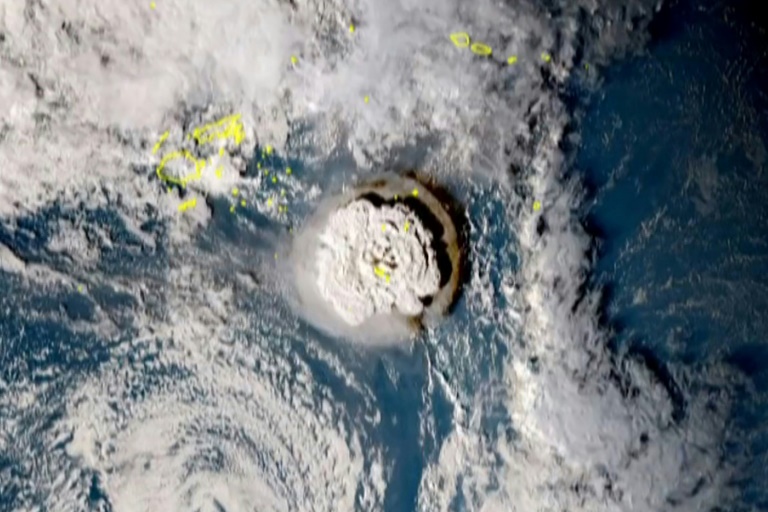
WELLINGTON, Nov 21, 2022 (BSS/AFP) - A deadly volcanic eruption near Tonga in
January was the largest ever recorded with modern equipment, a New Zealand-
led team of scientists revealed Monday.
The Hunga Tonga-Hunga Ha'apai volcano erupted underwater with a force
equivalent to hundreds of atomic bombs, unleashing a 15-metre (50-foot)
tsunami which demolished homes and killed at least three people on the
Pacific island kingdom.
The natural disaster also damaged undersea communication cables, cutting
Tonga off from the rest of the world for weeks and hampering efforts to help
the victims.
A detailed study by New Zealand's national institute for water and
atmospheric research shows the eruption blasted out almost 10 cubic
kilometres of material -- equivalent to 2.6 million Olympic-sized swimming
pools -- and fired debris more than 40 kilometres (25 miles) into the
mesosphere, the level above the Earth's stratosphere.
"The eruption reached record heights, being the first we've ever seen to
break through into the mesosphere," said marine geologist Kevin Mackay.
"It was like a shotgun blast directly into the sky."
The Hunga Tonga-Hunga Ha'apai eruption rivals the infamous Krakatoa disaster
which killed tens of thousands in Indonesia in 1883 before the invention of
modern measuring equipment.
"While this eruption was large -- one of the biggest since Krakatoa -- the
difference here is that it's an underwater volcano and it's also part of the
reason we got such big tsunami waves," Mackay added.
The team of scientists have accounted for three-quarters of the material
fired out by the Tongan eruption with the rest explained as debris scattered
in the atmosphere.
Mackay said the plume is estimated to have contained nearly two cubic
kilometres of particles which stayed in the atmosphere for "months, causing
the stunning sunsets we saw" across the Pacific region as far away as New
Zealand.
His team also discovered that the volcano's crater is now 700 metres deeper
than it was.
The eruption's pyroclastic flows -- deadly currents of lava, volcanic ash and
gases which reach temperatures of 1,000 degrees Centigrade (1,800 degrees
Fahrenheit) and speeds of 700 kilometres per hour -- carried debris from the
volcano along the sea floor at least 80 kilometres away.
"But the pyroclastic flows appear to extend beyond that, perhaps as far as
100 kilometres away," said the team's principal scientist Emily Lane.
"The sheer force of the flows is astonishing -- we saw deposits in valleys
beyond the volcano, meaning they had enough power to flow uphill over huge
ridges and then back down again."